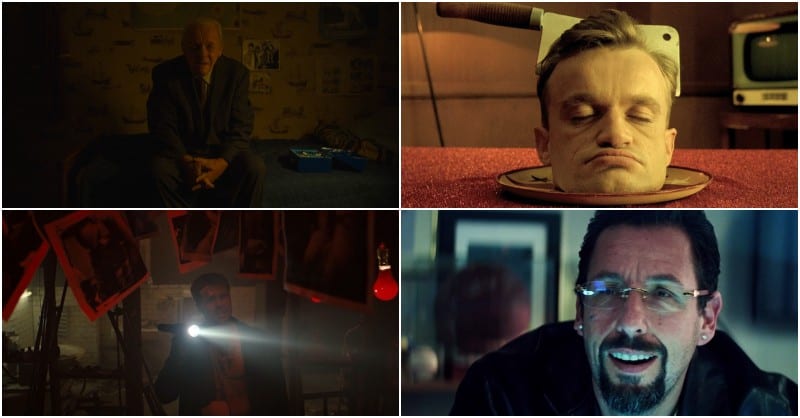You’re moving into a land of both shadow and substance, of things and ideas; you’ve just crossed over into a ‘Twilight Zone’ listicle.
October is defined in Webster’s Dictionary as “31 days of horror.” Don’t bother looking it up; it’s true. Most people take that to mean highlighting one horror movie a day, but here at FSR, we’ve taken that up a spooky notch or nine by celebrating each day with a top ten list. This article about the scariest Twilight Zone episodes is part of our ongoing series 31 Days of Horror Lists.
This is not a news flash. The Twilight Zone is the single greatest American television series EVER. No other show has had as long-lasting or as far-reaching an influence as Rod Serling‘s masterful anthology series. Using science-fiction, horror, and fantasy, The Twilight Zone explored topical narratives and themes, with many written by the twentieth-century’s most brilliant writers. We’re talking about legends like Richard Matheson, Ray Bradbury, Charles Beaumont, George Clayton Johnson, Earl Hamner, Jr., and a dozen more geniuses.
While the series was absolutely a product of its time, the episodes it left behind remain terrifyingly relevant. You can pop on a show at any hour, and it will grab your attention like any other prestige format product. The Twilight Zone is a show that burrows into its viewer, and years after consuming an episode, it will spring to the forefront of your imagination when a particular world event ignites an echo. You would not believe how many times I thought about “The Monsters are Due on Maple Street” during the Trump administration. Or, you can probably believe that, no problem.
Selecting the ten most horrific Twilight Zone episodes might have been the most challenging list to accomplish in our month-long 31 Days of Horror Lists event. Thankfully, our Boo Crew – Rob Hunter, Anna Swanson, Chris Coffel, Jacob Trussell, Valerie Ettenhofer, Meg Shields, and yours truly – were more than up to the task.
So, take it away, Rod:
You unlock this door with the key of imagination. Beyond it is another dimension: a dimension of sound, a dimension of sight, a dimension of mind. You’re moving into a land of both shadow and substance, of things and ideas; you’ve just crossed over into the Twilight Zone…
10. The Hitch-Hiker (Season one, episode sixteen)
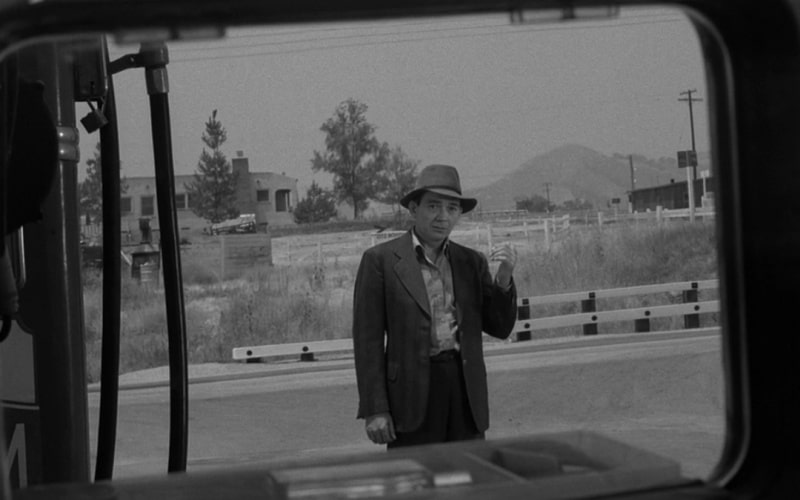
From the jump, The Twilight Zone was a golden television series. Season one is crammed with classics like ‘The Hitch-Hiker,” and Rod Serling accomplished this feat by adapting bangers from other mediums. This gem extends from the Lucille Fletcher play of the same name. It follows young Nan Adams (Inger Stevens) as she travels from one coast to the other. Early on, she gets in a wreck that should have killed her, but a friendly mechanic patches up her car and puts her on her way. She notices a somber-looking hitch-hiker wherever she goes, but he’s always magically ahead of her. Nan soon believes this devil wants to thumb a ride with her, and it causes her to enter a terrified state. As the episode slowly winds down, her fear becomes our fear until The Twilight Zone expertly pulls the carpet from under the character and the viewer. (Brad Gullickson)
9. Living Doll (Season five, episode six)
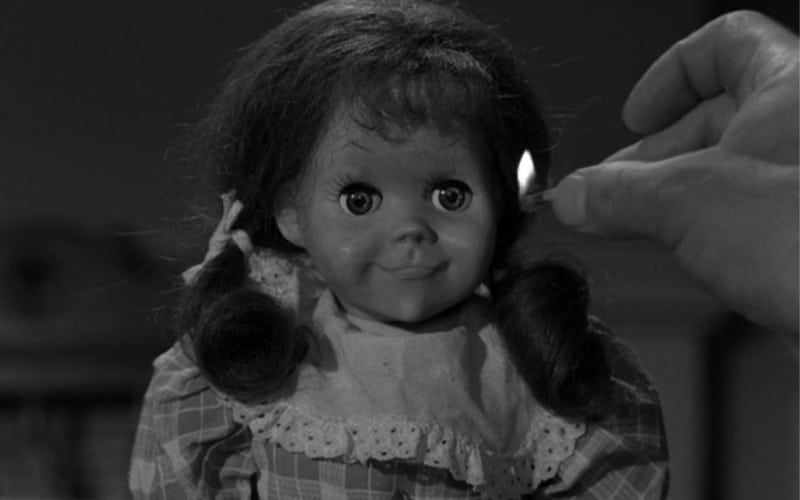
Talky Tina is a Twilight Zone icon, like the Gremlin on the Wing or Burgess Meredith’s shattered spectacles. She tells it like it is. When Telly Savalas‘s impotent stepdad takes out his frustration on his legally bound daughter, Talky Tina spouts antagonistic barbs at the dolt. With each shallow insult, Savalas grows dimmer with rage. Eventually, he convinces himself that the doll wants him dead, so he takes Tina to the blowtorch. No effect. “Living Doll” is an episode that delights in tormenting the jerkwad at its center. The viewer knows a hellish end is coming for Savalas, and they enjoy this inevitable destruction with relish. Almost as much as Talky Tina does. (Brad Gullickson)
8. Mirror Image (Season one, episode twenty-one)
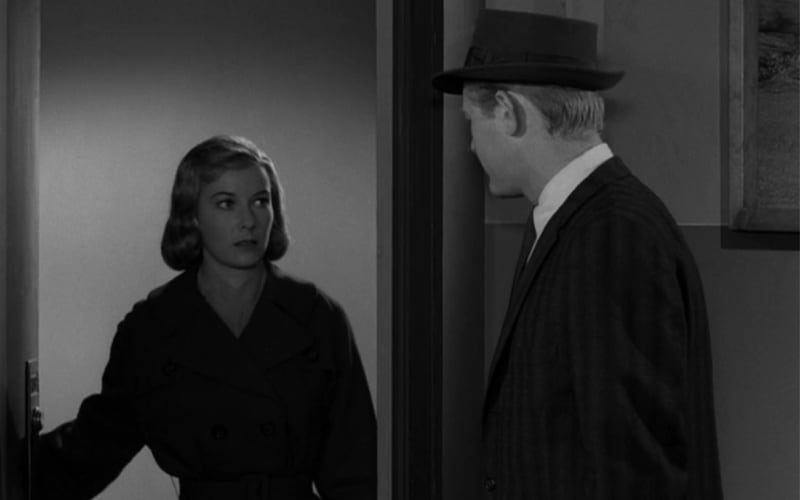
At its core, “Mirror Image” is a doppelganger story, even if Rod Serling leaves room for interpretation on what is happening to the episode’s lead character, Millicent Barnes (Vera Miles). As Millicent waits for a bus at a local depot, she experiences a series of strange occurrences. First, the ticket taker says she’s asked when the bus is coming multiple times, even though Millicent knows she has not. Then her bags begin to disappear, and the other passengers swear they saw her in locations she was never in. But the novel approach that Serling takes with the episode is by intimating that this isn’t just a case of centuries-old folklore but rather another dimension slowly merging with our own, leading Millicent into an existential nightmare. “Mirror Image” would go on to directly inspire Jordan Peele’s Us, but the episode’s uniqueness is as an early instance of the multiverse theory in pop culture, decades before that theory would become a Hollywood money-making machine. (Jacob Trussell)
7. Night Call (Season five, episode nineteen)
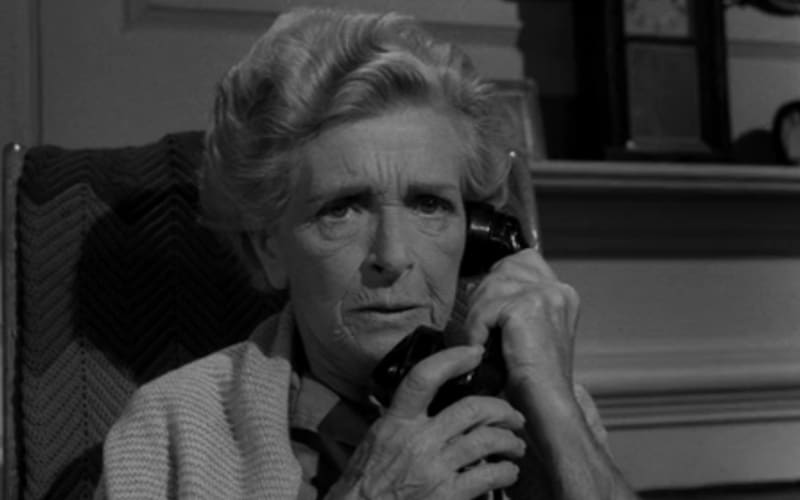
“Night Call” is a spooky one, but it’s an even sadder one. Old Elva Keene (Gladys Cooper) is awoken in the dead of night, her telephone ringing off the hook. When she answers, no one replies. She tries to go to bed. The next night, the phone rings again. Elva picks up to a man moaning. She hangs up. Another night, the phone rings. This time, someone has a little something to say. We learn a little more about Elva Keene with each call and what brought this particular haunting to her bedstand. There’s a lot to shiver over, but The Twilight Zone is more interested in leaving its viewers pondering their own regrets. The show asks us to make peace with our failures before they define us. Good luck, friends. (Brad Gullickson)
6. Nightmare at 20,000 Feet (Season five, episode three)
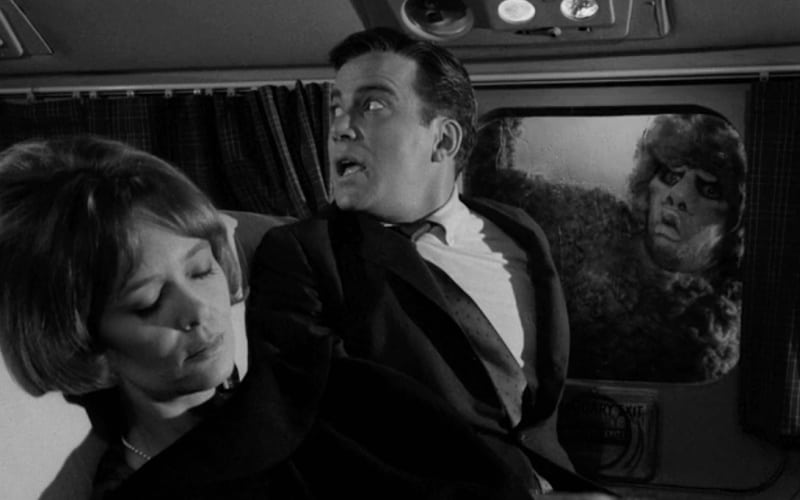
A few years before becoming a household name as Captain Kirk, William Shatner was trying to convince his fellow passengers that a gremlin was on the wing of their airplane. In “Nightmare at 20,000 Feet,” Shatner stars as Robert Wilson, a man attempting to fly for the first time since having a nervous breakdown on a plan several months prior. His attempt is ruined when he spots the mischievous gremlin. Despite his pleas, no one, including his wife, believes him, forcing Robert to take action himself. “Nightmare at 20,000 Feet” is arguably the most popular episode of the landmark series, making its way into the feature film and appearing in the 2019 series reboot. And it’s easy to see why. Shatner, with direction from Richard Donner, gives a stellar performance that is easily one of the most memorable of his illustrious career. (Chris Coffel)
This list of the ten scariest Twilight Zone episodes concludes on the next page…

Related Topics: 31 Days of Horror Lists

Recommended Reading
















